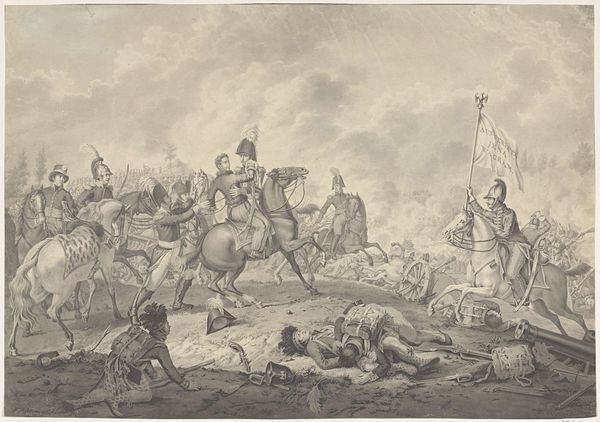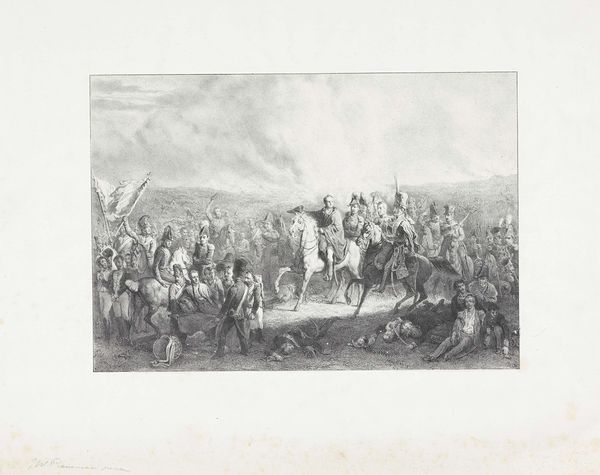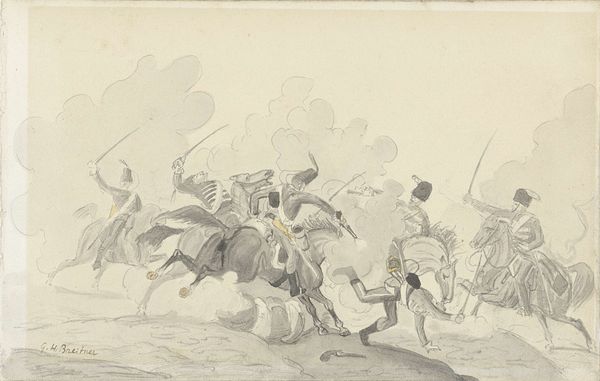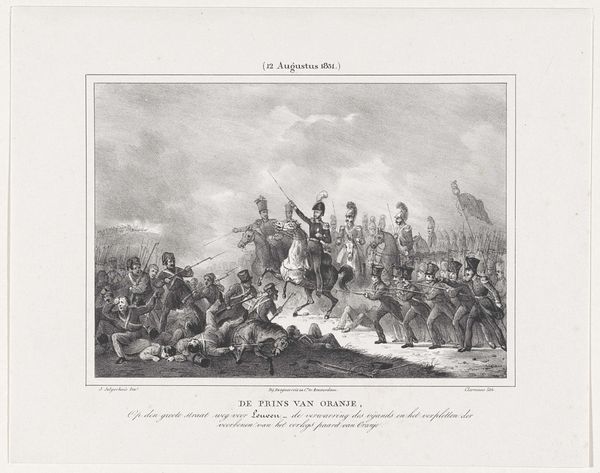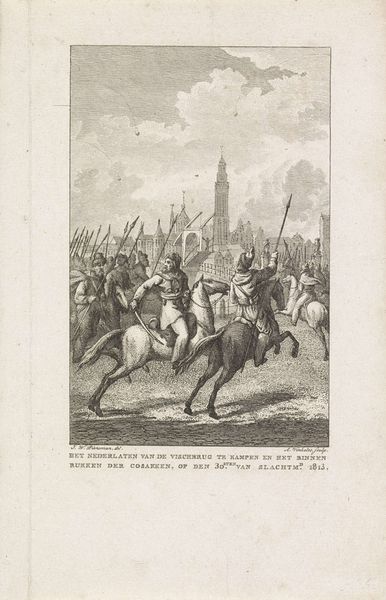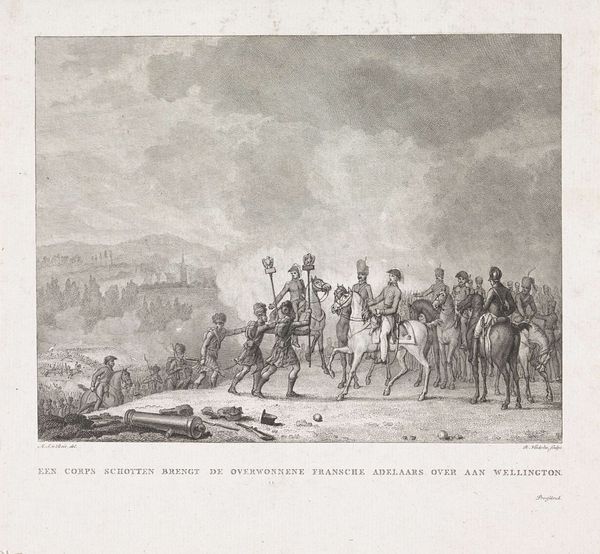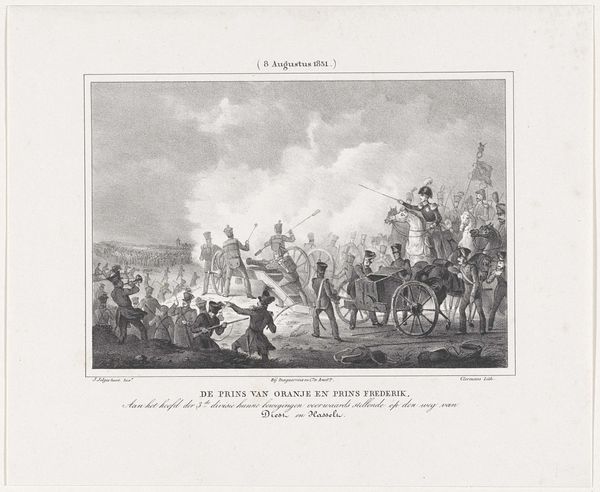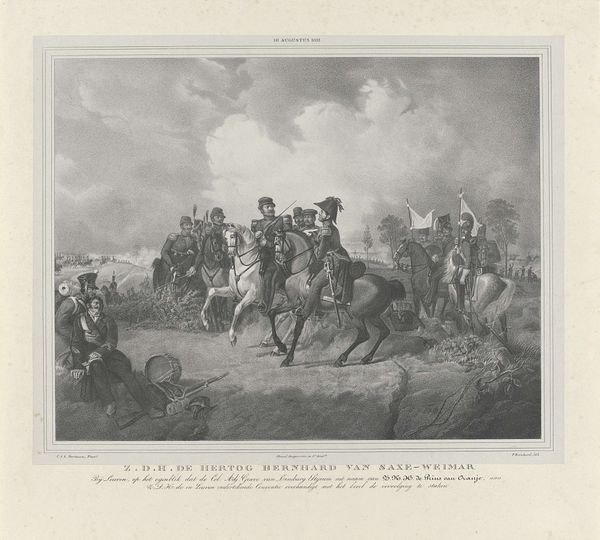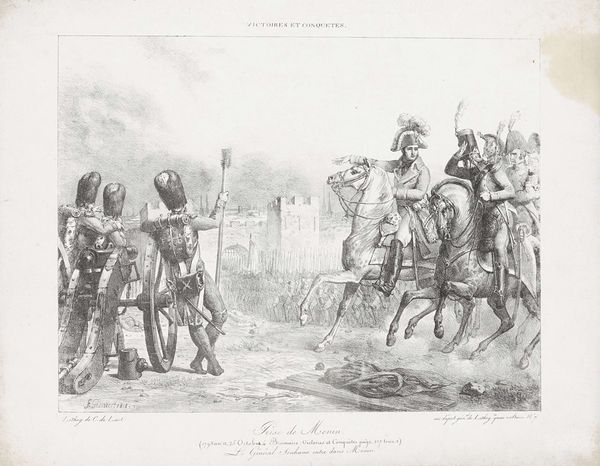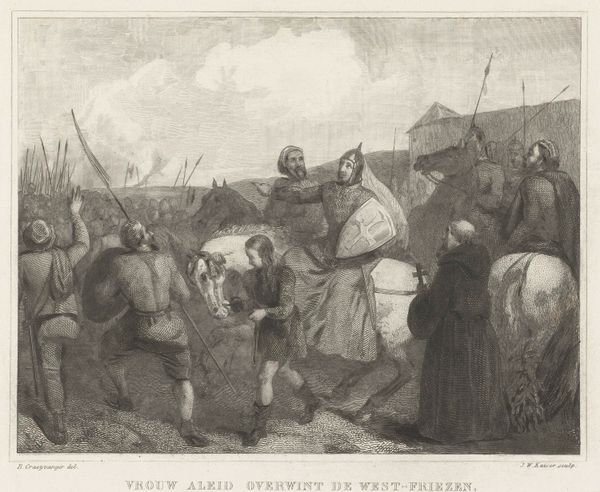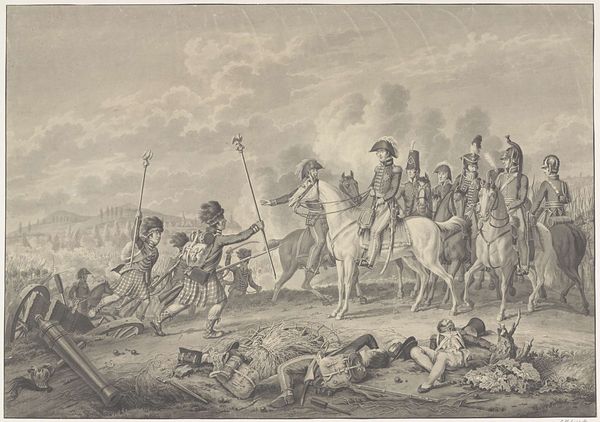
Dimensions: height 161 mm, width 238 mm
Copyright: Rijks Museum: Open Domain
Curator: This print is called "Slag bij Castricum, 1799," which translates to "The Battle of Castricum, 1799." It was created between 1853 and 1861, by an anonymous artist, and you can find it here at the Rijksmuseum. It's an engraving that captures a moment of intense conflict. Editor: It's so dynamic! The chaos of battle practically jumps off the page, doesn't it? Even with the muted tones of the print, there’s a real sense of violence and struggle. I’m drawn to the central figures grappling near the horses. Curator: The Battle of Castricum was a significant event during the Anglo-Russian invasion of Holland, a campaign aimed at ousting French forces and reinstating the Stadtholder. What’s interesting is this print was produced decades after the actual battle, placing it within a broader 19th-century trend of Romantic Nationalism. These images often served to construct and reinforce national identity. Editor: Exactly, the "history painting" genre had a huge role to play in shaping national narratives, which often glorified particular sides and conveniently forgot or downplayed any complexities that contradicted their self-serving nationalist ambitions. You see this mythmaking even within the chosen aesthetic--Romanticism lends itself beautifully to stirring up emotion and idealizing conflict. Curator: Looking closer, notice how the artist balances realism and romanticism. The detailed uniforms and weaponry indicate attention to historical accuracy, yet the composition evokes drama and heroism. This juxtaposition highlights a need to represent history factually, but also with emotion, that's crucial to inspiring feelings of pride and belonging. Editor: Yes, and let’s think about the power dynamics. Who gets remembered as a hero, and who’s relegated to the background or entirely erased from these historical images? Whose perspective is being validated? This piece clearly favors a Dutch national view, casting them in a positive light during the battle, so, who is telling this story is something we must consider. Curator: Examining the role that artworks play in celebrating key moments, one can more deeply understand the shaping of national pride. The print immortalizes not just a battle, but a turning point in Dutch history. Editor: Absolutely, art such as this often functions as more than mere representations—it actively participates in how people come to understand themselves and their place within larger historical narratives. Curator: These works allow us to contextualize its time and culture while recognizing it can fuel or be used to challenge specific agendas. Editor: Exactly, engaging with art critically encourages a much wider awareness of representation.
Comments
No comments
Be the first to comment and join the conversation on the ultimate creative platform.
